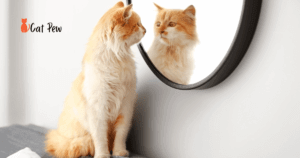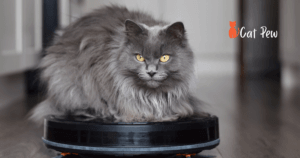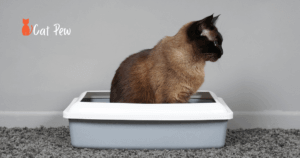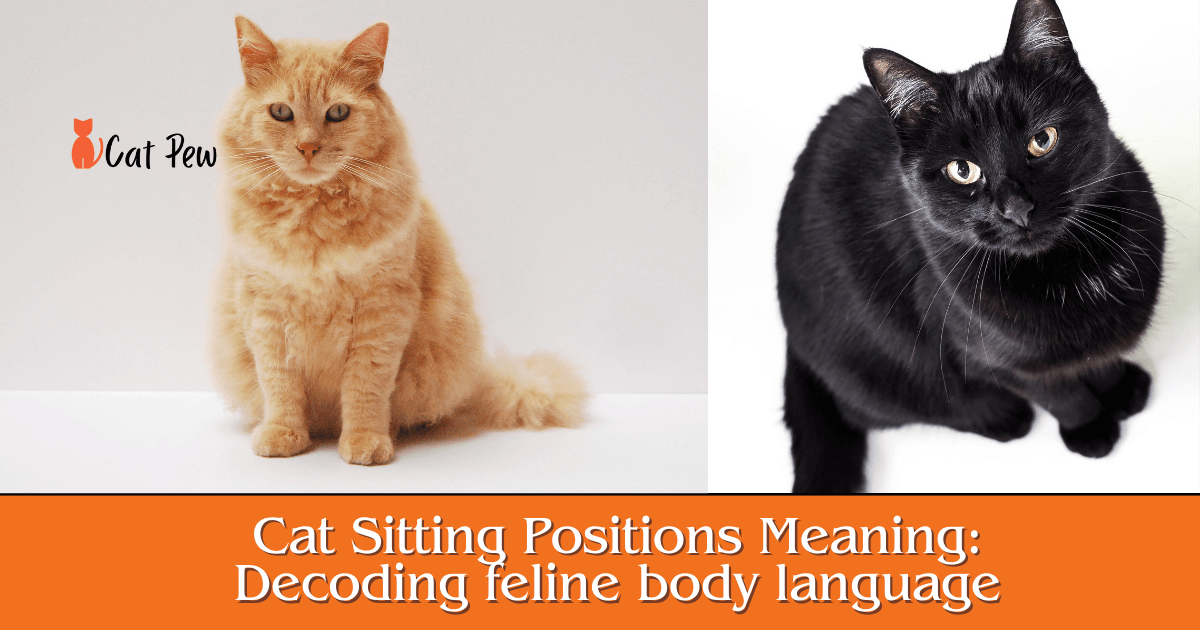Cat sitting positions have different meanings, such as a relaxed position indicating comfort or a tense posture indicating alertness. Understanding your cat’s body language can help you communicate better with your feline friend.
As cat owners, it’s important for us to understand our pets’ needs and desires. One way to do this is by observing their body language, including their sitting positions. Cats often have specific sitting postures that communicate their mood or intentions.
These positions can vary from a relaxed and comfortable posture to a tense and alert one. By paying attention to your cat’s sitting positions, you can gain insights into how they’re feeling and what they may be trying to communicate. We’ll explore various cat sitting positions and their meanings, helping you better understand your furry companion.
Cat Sitting Positions Meaning

Learn about the various cat sitting positions and their meanings, providing insights into their body language and emotions. Discover how to interpret your furry friend’s posture and understand their needs.
Cats have a unique way of sitting that can convey a lot about their mood and overall well-being. By observing their sitting positions, you can gain insights into their comfort level, confidence, and even potential health issues. Understanding the meaning behind cat sitting positions can help you better understand your furry friend’s needs and provide them with the care they deserve.
What Do Different Cat Sitting Positions Mean?
- Tail wrapped around the body: When a cat wraps its tail around its body, it is a sign of relaxation and contentment. This position indicates that your cat feels safe and secure in its environment.
- Legs tucked under the body: If your cat sits with its legs tucked under its body, it is a sign of relaxation and rest. This position is commonly seen during naptime or when your cat is in a calm state.
- One leg stretched out: When a cat stretches out one leg while sitting, it is a sign of comfort and relaxation. It may indicate that your cat is ready to rest or take a nap.
- Legs to the side: If your cat sits with its legs spread out to the side, it shows a relaxed and comfortable state. This position is often seen when cats are feeling playful or when they are trying to cool down.
- Perched on hind legs: When a cat sits on its hind legs with its front paws off the ground, it is a sign of curiosity and alertness. This position allows cats to have a better vantage point and observe their surroundings.
- Tail wrapped around paws: When a cat wraps its tail around its paws while sitting, it is a sign of comfort and security. This position is often seen when cats are feeling relaxed and content.
- Kneading: Kneading is when a cat rhythmically pushes its paws in and out against a soft surface, often accompanied by purring. This behavior is a sign of contentment and is commonly seen when cats are relaxed and happy.
- Crouching: When a cat sits in a low crouched position, it may indicate that it is feeling anxious, scared, or defensive. This position is seen when cats are on high alert or feel threatened.
- Sitting upright with tail curled: If your cat sits upright with its tail curled around its body, it is a sign of curiosity and mild interest. This position is often seen when cats are observing something intriguing in their environment.
- Languid sprawl: When a cat sprawls out on its side or back with its legs stretched out, it shows extreme relaxation and trust. This position indicates that your cat feels completely at ease in its surroundings.
By paying attention to your cat’s sitting positions, you can better understand their mood and provide them with the care and attention they need. Remember, each cat is unique, so their sitting positions may vary. Observing these positions alongside other behavioral cues can help you build a stronger bond with your feline companion.
Cat Sitting Positions

Cat sitting positions have different meanings. Understanding a cat’s sitting position can provide insights into their mood, comfort, and overall well-being. From the loaf position to the sphinx, each posture communicates a unique message about your feline friend.
Cat Sitting Positions:
Cats are known for their intriguing behaviors and unique body language. One such behavior is their various sitting positions, which can reveal a lot about their mood and physical comfort. Understanding these positions can help cat owners interpret their furry friend’s emotions and provide appropriate care.
In this section, we will explore the meaning behind different.
1. Loaf Position:
- The cat sits with all four paws tucked neatly under its body, resembling a loaf of bread.
- This is a relaxed, content posture, indicating that the cat feels safe and comfortable.
- It’s a common position for cats while napping or taking a break.
2. Perched Position:
- This position involves a cat sitting on its hind legs while keeping the front legs off the ground.
- It showcases curiosity and attentiveness, as the cat is ready to spring into action if needed.
- Cats may assume this position while observing prey or investigating their surroundings.
3. Sphinx Position:
- In the Sphinx position, the cat sits upright with its forelegs straight and its hind legs supporting the body.
- This posture displays alertness and readiness for action.
- Cats may assume this position when experiencing uncertainty or when attempting to establish dominance.
4. Contortionist Position:
- This position is characterized by the cat twisting its body into unusual shapes while sitting.
- It often indicates comfort and relaxation, as the cat feels secure enough to maintain an unconventional posture.
- Cats may adopt this position during grooming sessions or when in a playful mood.
5. Lap Cat Position:
- This position involves a cat sitting on its owner’s lap, usually with its paws tucked underneath.
- It is a sign of trust and affection, as cats feel safe and cozy in their owner’s presence.
- Cats may assume this position to seek warmth and companionship from their humans.
6. “buddha” Position:
- The “Buddha” position refers to a cat sitting in a cross-legged pose, with its paws neatly tucked.
- This posture signifies complete relaxation and contentment.
- It’s a common position for cats during extended periods of rest or while basking in the sun.
Understanding the meaning behind different cat sitting positions can enhance your bond with your feline companion. Observing their body language and responding accordingly ensures that you provide a safe and comfortable environment for your beloved pet. So, next time you see your cat sitting in a particular position, take a moment to appreciate the subtle messages they are conveying.
Cat Sitting Positions Meanings
Discover the meanings behind different cat sitting positions, from the curled-up ball to the stretched-out sprawl, uncovering what your feline friend is trying to communicate through their body language.
Cat sitting positions can be adorable, curious, and sometimes downright perplexing. If you’re a cat owner or simply a cat enthusiast, you may have wondered about the meanings behind some of these unique poses. From the classic loaf position to the playful tummy flop, each sitting position holds its own significance in the feline world.
In this blog post, we’ll explore the various cat-sitting positions and unravel their hidden meanings.
The Loaf Position:
- A cat sitting in the loaf position appears like a small loaf of bread with all four paws tucked neatly underneath its body.
- This position showcases your cat’s flexibility and is a comfortable resting pose that shows they feel safe and secure.
The Sphinx Position:
- The sphinx position is characterized by a cat sitting upright with its front legs extended and the hind legs tucked underneath.
- This position demonstrates confidence and attentiveness, as the cat is ready to pounce or respond to any stimuli in its environment.
The Tummy Flop:
- When a cat flops onto its back and exposes its belly, it’s known as the tummy flop position.
- This vulnerable position indicates trust and contentment in the cat’s surroundings. It suggests your cat feels relaxed and safe enough to expose its most sensitive area.
The Perch Position:
- Cats may sit perched on a high surface, such as a windowsill or a piece of furniture, with their paws tucked underneath them.
- The perch position allows cats to observe their surroundings from a higher vantage point, offering them a sense of security and the ability to survey their territory.
The Curled Up Position:
- When a cat curls up into a ball, with the tail wrapped around its body and the paws underneath, it’s known as the curled-up position.
- This position helps cats conserve body heat and provides them with a sense of comfort and protection. It is commonly observed during sleep or rest.
The Side-lying Position:
- Cats often sprawl on their sides with their legs extended or slightly folded, showcasing the side-lying position.
- This relaxed pose indicates a high level of comfort and trust in the environment. It’s a common position for playful cats or those seeking attention.
The Bread Loaf Position:
- Similar to the loaf position, the bread loaf position features the cat sitting with its paws tucked underneath. However, in this variation, the cat’s hind legs are also neatly tucked in, resembling a loaf of bread more closely.
- Cats adopt this position when they are seeking warmth or a sense of security. It allows them to preserve body heat and relax in a cozy manner.
The Kneading Position:
- Kneading is characterized by a cat rhythmically pushing its paws in and out against a soft surface, such as a blanket or your lap.
- This behavior is often associated with contentment, as it harks back to their kitten days when they would knead against their mother’s belly to stimulate milk flow.
The “bunny” Position:
- In the bunny position, a cat sits with its hind legs stretched out flat in front of its body.
- This position showcases a state of relaxation and comfort. It is often observed when a cat feels secure and has no need to be on high alert.
The Elevated Perch Position:
- Cats may choose to sit on an elevated perch, such as a ledge or the top of a couch, with their front paws hanging over the edge.
- This position allows cats to observe their environment while asserting a sense of superiority and ownership over their territory.
Understanding the meanings behind various cat sitting positions can deepen your connection with your feline companion. It provides insight into their state of mind, comfort level, and overall well-being. Whether they’re loafing, perching, or tummy flopping, it’s always fascinating to witness these adorable poses and decode the hidden messages from our beloved furry friends.
Cat Sitting Poses Meaning

Cat sitting positions have different meanings. Understanding their body language can help you decode their emotions and intentions.
Cats are known for their unique and sometimes puzzling behaviors, and their sitting positions are no exception. From the classic loaf position to the relaxed sprawl, the way a cat sits can reveal a lot about its mood and intentions.
In this section, we will explore various cat-sitting poses and their meanings, giving you insights into your feline friend’s world.
Loaf Position:
- The cat tucks its paws underneath its body and appears compact.
- Indicates relaxation and contentment.
- It is a safe and secure position, showing that the cat feels at ease in its surroundings.
Sphinx Position:
- The cat sits upright with its front paws extended, resembling a sphinx statue.
- Signifies a sense of alertness and curiosity.
- This pose allows the cat to have a better view of its surroundings and prepares it for a quick reaction if needed.
Perch Position:
- The cat sits with its hind legs folded underneath, while the front legs are positioned on a higher surface.
- Demonstrates the cat’s desire for a vantage point to observe its environment.
- Cats use this position to gain a better perspective and feel more in control of their surroundings.
Sprawl Position:
- The cat lies on its side with its legs stretched out, appearing relaxed and carefree.
- Reflects complete comfort and trust in the environment.
- When a cat assumes this position, it is fully at ease and feels secure enough to expose its vulnerable belly.
Tail Wrap Position:
- The cat wraps its tail around its body while sitting in any position.
- Indicates a sign of self-comfort and protection.
- Cats use this pose to keep warm or show relaxation, particularly during naps or rest time.
Kneading Position:
- The cat rhythmically pushes its paws in and out against a surface.
- Reflects contentment and happiness.
- This behavior is an instinct inherited from kittenhood when they kneaded their mother’s abdomen to stimulate milk flow.

Understanding a cat’s sitting position can provide valuable insights into their emotional state and overall comfort level. By observing these poses, you can better interpret your furry companion’s needs and ensure they feel safe and secure in their environment. Remember, each cat is unique, so take the time to familiarize yourself with their individual preferences and behaviors.
Frequently Asked Questions On Cat Sitting Positions Meaning
What Are The Different Cat Sitting Positions?
Cat sitting positions include the loaf position, the upright position, and the curled-up position. Each position indicates a different level of relaxation or alertness in the cat.
Why Do Cats Sit In Different Positions?
Cats sit in different positions to regulate their body temperature, find a comfortable spot, or display their mood. They may sit in an upright position to keep a watchful eye, or in a curled-up position to conserve body heat and feel secure.
What Does It Mean When A Cat Sits In The Loaf Position?
The loaf position in cats is when they sit with their legs neatly tucked under their body. It indicates that the cat is relaxed, content, and feels safe in their environment.
Why Do Cats Sometimes Sit With Their Back Legs Extended?
When cats sit with their back legs extended, it is a sign of comfort and relaxation. It allows them to stretch their muscles, show off their flexibility, and take an open, vulnerable position in their surroundings.
Conclusion
To sum up, understanding the various cat sitting positions can provide valuable insights into your feline companion’s mood and comfort level. Whether it’s the Sphinx, the Loaf, or the Yoga Pose, each posture communicates a unique message. By paying attention to your cat’s body language, you can strengthen your bond and ensure their well-being.
So, next time you see your cat curl up or stretch out, remember to decipher their sitting positions and respond accordingly. Happy cat-sitting!

Jonathon
I love cats, I have more than 10 years of experience in raising cats. I want to share with everyone useful knowledge about cats.

